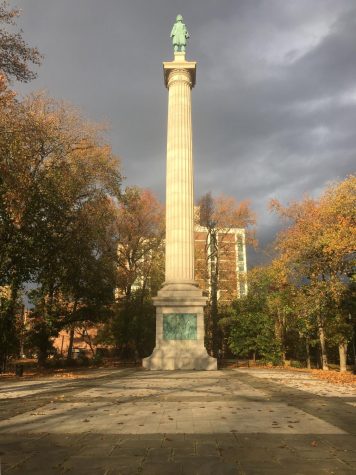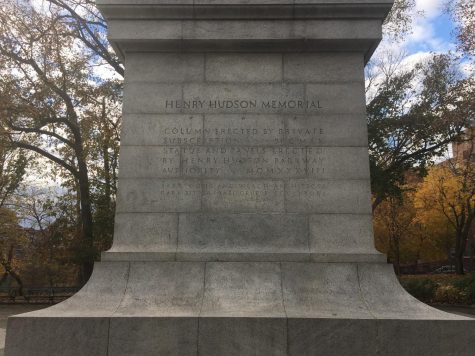The Henry Hudson Monument: An Underappreciated Gem
“[Henry Hudson Monument has] a fluted Doric column standing upon a cubical plinth relieved with appropriate moldings. Not only is it one of the known landmarks in New York City, but it is probably the most impressive memorial to Hudson anywhere,” wrote Reverend William A. Tieck in the book ‘Riverdale, Kingsbridge, Spuyten Duyvil.’
Up in the northwest Bronx, on the incline of a hill, sits Henry Hudson Park. It is a lovely place, with beautiful trees and many benches on which to sit. However, the real attraction is at the front, where, somewhat hidden by the canopy of trees, there is a clearing of concrete. At the back sits a statue of awesome proportions. The statue itself is around 16 feet tall and seated on a Doric column 106 feet high, looking as if it had been taken straight from Washington D.C.

The man on the statue is Henry Hudson, an explorer sent by the Dutch East India Company to find a new passage to Asia through the East. This mission failed, but instead of going home in defeat, Hudson decided to turn around and seek a western passage through North America, a continent only ‘discovered’ by Europeans a century before, even though Native Americans had been living her for centuries before it came to the Europeans’ attention.
The history of the statue is just as strange as the man who takes its likeness. The monument was originally conceived by William C. Muschenheim, an architect who lived in the area. The granite column was erected in 1909, but before Hudson’s figure could be put up as well, the man who had been chosen to sculpt the statue, Karl Bitter, was run over by an automobile. At the same time, funds for the project had run dry, and work on the monument had to be halted.
Almost 22 years later, in the last months of 1936, the statue was revisited by the Parks Commissioner at the time, Robert Moses. Moses was one of the most influential builders of the post-WWII era in New York City and is responsible for much of the infrastructure we see all over the boroughs. He wanted the statue to be finished as a part of his Henry Hudson Bridge and Park project.

Reliefs (a kind of sculpture where the design is molded out of the metal sheet) flank the front and back of the base of the column. The forward-facing relief depicts Hudson and his men examining a globe, most likely trying to figure out where they are headed. The scene is rife with tension, so much so that one man has a hand on his sword, ready to turn it on anyone at a moment’s notice. The back-facing relief tells a very different story, representing Hudson trading European goods with Algonquin Indians in exchange for furs.
Henry Hudson Park is not the flashiest place. It does not have the nicest flowers or the most well-kept pathways, but it has a rich history all to its own. So, if you are looking for something to do, why not make the trip to see this beautiful diamond in the rough?
Why not make the trip to see this beautiful diamond in the rough?
Tzvi Kalb is an Editorial Editor for 'The Science Survey.' For Tzvi, journalistic writing gives him incredible freedom to write on important issues and...

![“[Henry Hudson Monument has] a fluted Doric column standing upon a cubical plinth relieved with appropriate moldings. Not only is it one of the known landmarks in New York City, but it is probably the most impressive memorial to Hudson anywhere,” wrote Reverend William A. Tieck in the book 'Riverdale, Kingsbridge, Spuyten Duyvil.'](https://thesciencesurvey.com/wp-content/uploads/2021/01/F5B86A14-D0F2-4844-B4BB-83302BEAB480-900x675.jpeg)